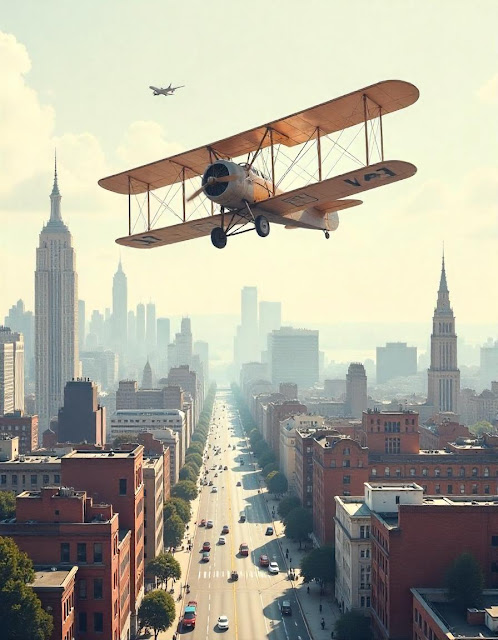Discover the History and Evolution of the Airplane | From Wright Brothers to Modern Aviation
Introduction:
Imagine a world where long-distance travel by air is impossible. A time when the skies were completely out of reach. Today, we can easily board an airplane and travel across the world in a matter of hours. But how did this incredible leap from the ground to the sky happen? It all started with a dream—a dream shared by many, but only a few had the vision and courage to make it a reality. Let’s take a look at the origins of the airplane and how it became one of the most revolutionary inventions in human history.
The Vision of Flight: Early Dreamers
For centuries, humanity looked to the skies, fascinated by the idea of flight. From the myth of Icarus to Leonardo da Vinci's sketches of flying machines, the notion of soaring through the air captivated great minds. However, practical attempts to create a flying machine were mostly limited to fantasy or theoretical designs.
In the late 19th century, this dream began to transform from myth into reality. Scientists and engineers were making significant advances in mechanics, aerodynamics, and engines—critical components for human flight.
The Wright Brothers: The First Successful Flight
While many individuals contributed to the development of flight, it was Orville and Wilbur Wright, two American inventors and brothers, who are credited with the first successful powered flight in 1903.
On December 17, 1903, the Wright brothers made history with their Flyer 1, a craft that flew for 12 seconds, covering a distance of 120 feet in Kitty Hawk, North Carolina. Though short, this momentous flight proved that human flight was possible. The Wright Flyer was powered by a 12-horsepower engine and had a wingspan of just 12.3 meters. More importantly, it showed that flight could be controlled, an essential factor in making air travel safe and reliable.
Key Innovations That Led to Success
While the Wright brothers were not the first to attempt flight, they were the first to solve key challenges that previous inventors had failed to overcome. These challenges included:
-
Control: The Wright brothers developed a system of control that allowed the pilot to manage the plane’s movement in the air. This was achieved through a technique known as “wing-warping,” which enabled the plane to bank and turn.
-
Engine and Power: The Wright brothers designed their own lightweight engine because, at the time, no existing engine was powerful enough yet light enough for flight.
-
Aerodynamics: Through extensive testing of wings and understanding the effects of wind on structures, the Wright brothers made significant advances in aerodynamics. Their work on lift and drag was groundbreaking.
From the Wright Brothers to Modern Aviation
The first flight in 1903 was just the beginning. Over the next decades, aviation technology evolved rapidly. Aircraft became faster, more powerful, and larger. The introduction of commercial air travel in the 1920s changed the way people traveled forever, making the world smaller and more connected.
During World War I, airplanes became crucial tools in warfare, leading to rapid advancements in military aviation. By the mid-20th century, the jet engine was developed, making airplanes even faster and more efficient. This technological leap paved the way for jet airliners, which soon became the primary mode of long-distance air travel
In the modern era, airplanes are integral to our daily lives, whether for business, leisure, or global trade. Innovations like sustainable aviation fuels, electric planes, and advanced air traffic management systems continue to shape the future of aviation.
The Future of Flight: Beyond the Horizon
As we look ahead, the dream of flight is evolving once again. With advancements in electric propulsion, autonomous flying systems, and even space tourism, we are on the cusp of another revolution in aviation. Companies like SpaceX and Blue Origin are pushing the boundaries of what's possible, bringing us closer to space travel for everyday people.
The question is no longer "Can we fly?" but "Where can we go next?"
Conclusion: A Dream Realized
The invention of the airplane is not just a triumph of engineering; it is a testament to the power of human ingenuity and determination. From the Wright brothers' first 12-second flight to today's massive commercial airliners that cross continents, airplanes have drastically transformed the way we live and connect. As we continue to innovate, the skies are no longer the limit—they are just the beginning.
.jpg)
.jpeg)
.jpg)
.jpg)


Comments
Post a Comment